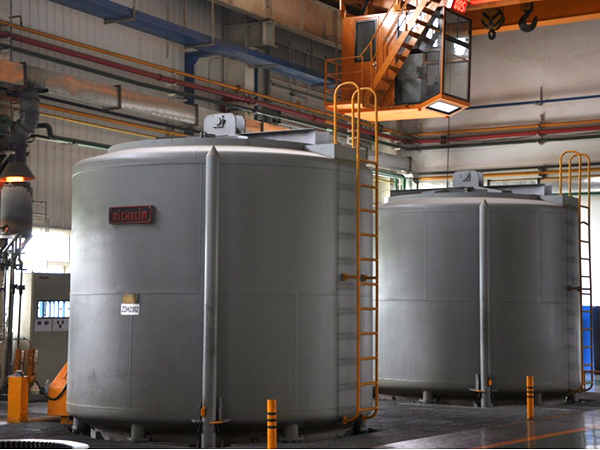400-000-0000

Advantages and structure of multi-purpose nitriding furnace
First, fast penetration
Holding time: 8-10 hours, depth of permeation layer: 0.14 ~ 0.18mm, bright layer: 0.006 ~ 0.01mm
Large furnace loading and low processing cost
Nitriding furnace adopts low-vacuum pressure-varying technology to complete the nitriding (nitriding) process under a low-vacuum and pressure-varying environment. The fresh atmosphere can penetrate into any corner of the furnace tank, so the workpiece can be tightly packed to make the furnace. The amount is greatly increased, and at the same time, the furnace has good sealing performance and heat preservation performance, thereby significantly reducing processing costs.
Third, the surface friction coefficient is small
Due to the low vacuum transformer technology, the nitride nitride layer on the working surface is extremely dense, so the surface friction coefficient is small.
Fourth, the process is stable
The atmosphere in the furnace is uniform and controllable, and the furnace temperature is uniform, thereby ensuring the stability of the process and improving and ensuring the quality of nitriding at work.
Five, simple operation
When the nitriding furnace works, the pressure in the furnace changes cyclically, and the nitrogen potential also changes cyclically. This makes the one-stage nitriding have the advantages of two-stage and three-stage nitriding. A simple operation process of 4 to 5 furnaces. The furnace body is a cylindrical deep well, and the workpiece is vertically heated in the furnace by a special crane. The fuels used are usually gas and oil. When electricity is used as a heat source, it is called a well-type resistance furnace. Well-type resistance furnaces are generally placed below the ground level of the workshop, and some are placed above the ground level, or half each above the ground level. Pit-type resistance furnace: Pit-type resistance furnace is a periodic operation furnace, suitable for heat treatment of rod and long shaft parts.
The main use of the well type resistance furnace: for the quenching and tempering, annealing and other heat treatment of steel parts in an oxidizing atmosphere.
The structure of the well type resistance furnace is: the furnace body is a cylindrical deep well, and the workpiece is vertically heated in the furnace by a special crane. The fuels used are usually gas and oil. When electricity is used as a heat source, it is called a well-type resistance furnace. Well-type resistance furnaces are generally placed below the ground level of the workshop, and some are placed above the ground level, or half each above and below the ground level.
Characteristics of well type resistance furnace:
1. The electric furnace is equipped with a large fan device to improve the temperature uniformity in the furnace;
2. The electric furnace is controlled in multiple zones to further improve the uniformity of the furnace temperature;
3. The furnace is equipped with a stainless steel air guide bucket;
4. Opening and closing of the furnace cover adopts crane lifting or automatic hydraulic opening and closing mechanism, and has a guide column to ensure that the furnace cover is opened and closed smoothly;
5. The furnace cover and furnace body are made of high temperature resistant fiber cotton, which has good thermal insulation performance, saves energy and reduces production costs;
6, no pollution, good environmental protection benefits.
